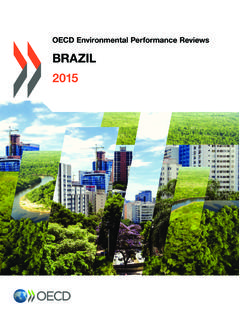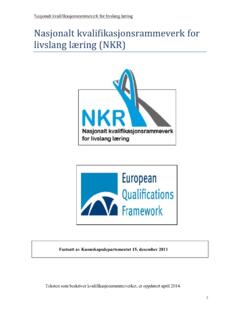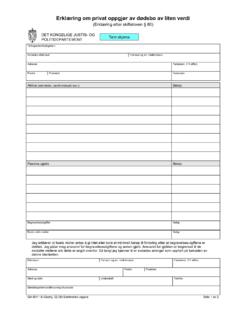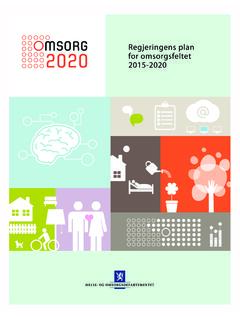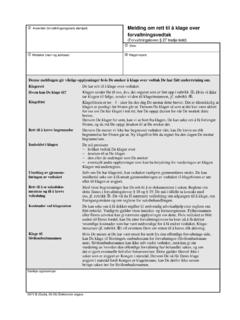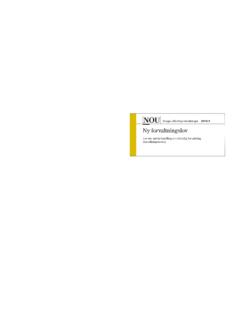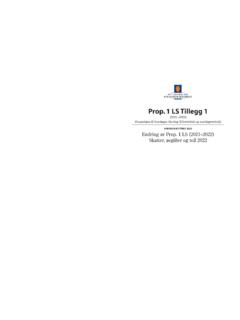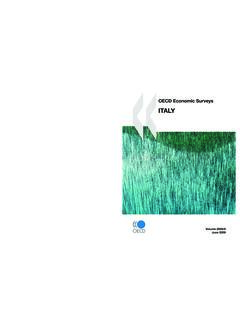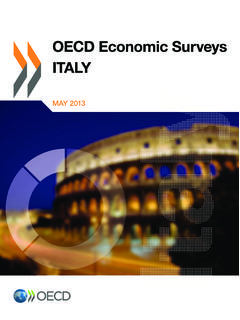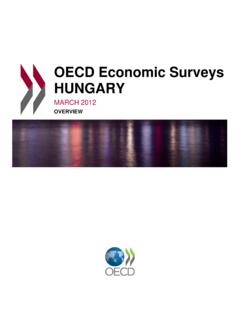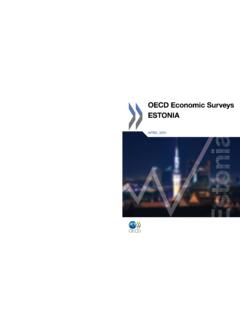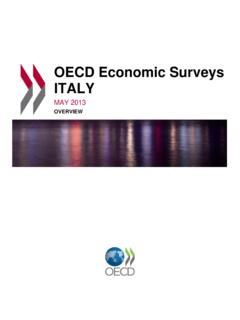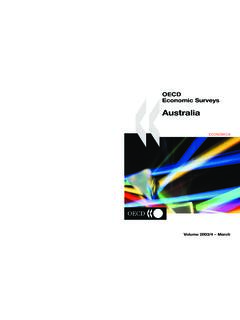Transcription of OECD Economic Surveys: Norway 2010 - …
1 OECD Economic Surveys: Norway2010 ORGANISATION FOR Economic CO-OPERATION AND DEVELOPMENTThe OECD is a unique forum where the governments of 30 democracies work together toaddress the Economic , social and environmental challenges of globalisation. The OECD is also atthe forefront of efforts to understand and to help governments respond to new developments andconcerns, such as corporate governance, the information economy and the challenges of anageing population. The Organisation provides a setting where governments can compare policyexperiences, seek answers to common problems, identify good practice and work to co-ordinatedomestic and international OECD member countries are: Australia, Austria, Belgium, Canada, the Czech Republic,Denmark, Finland, France, Germany, Greece, Hungary, Iceland, Ireland, italy , Japan, Korea,Luxembourg, Mexico, the Netherlands, New Zealand, Norway , Poland, Portugal, the Slovak Republic,Spain, Sweden, Switzerland, Turkey, the United Kingdom and the United States.
2 The Commission ofthe European Communities takes part in the work of the Publishing disseminates widely the results of the Organisation s statistics gathering andresearch on Economic , social and environmental issues, as well as the conventions, guidelines andstandards agreed by its 978-92-64-07712-6 (print)ISBN 978-92-64-07713-3 (PDF)DOI : OECD Economic SurveysISSN 0376-6438 (print)ISSN 1609-7513 (online)OECD Economic Surveys NorwayISSN 1995-3321 (print)ISSN 1999-0383 (online)Also available in credits: Cover Comstock/Comstock Images/Getty to OECD publications may be found on line at: OECD 2010 You can copy, download or print OECD content for your own use, and you can include excerpts from OECD publications, databases and multimediaproducts in your own documents, presentations, blogs, websites and teaching materials, provided that suitable acknowledgment of OECD as sourceand copyright owner is given.
3 All requests for public or commercial use and translation rights should be submitted to Requests forpermission to photocopy portions of this material for public or commercial use shall be addressed directly to the Copyright Clearance Center (CCC)at or the Centre fran ais d exploitation du droit de copie (CFC) at ON CONTENTSOECD Economic SURVEYS: Norway OECD 20103 Table on contentsTable of contentsExecutive summary ..8 Assessment and recommendations ..11 Chapter 1. Emerging from the crisis ..19 The impact of the financial crisis was limited ..20A swift recovery is expected..26It is time for macroeconomic policy to adjust ..27 The financial stability framework is well-founded but could be strengthened.
4 47 Notes ..65 Bibliography ..66 Annex Is there a housing market bubble? ..69 Annex Taking stock of structural reforms ..73 Chapter 2. Addressing the long-term challenges of fiscal policy ..77 Long-term fiscal challenges require policy changes..78 Improving the efficiency of public spending..83It is necessary to rethink central-local relations ..87 Reforms to raise human capital must be continued..89 Health and long-term care spending is under pressure..92 There is some scope to improve tax neutrality ..98 Notes .. 103 Bibliography .. 104 Chapter 3. Sustainable development: Climate change and fisheries policies .. 107 Sustainable development in Norwegian Economic policy.
5 108 Climate change..112 Fisheries .. 131 Notes .. 143 Bibliography .. impact on potential output should be limited .. fiscal multiplier .. the communication of the central bank .. households are highly leveraged .. behind the strong credit growth to the household sector.. the central bank lean against the wind? .. Norway join the euro area? .. councils in OECD countries..47 TABLE OF CONTENTSOECD Economic SURVEYS: Norway OECD of the Norwegian financial sector.. in the financial sector .. oil tax payment system .. covered bonds swap arrangement .. three-pillar system for ensuring financial stabiliity.. of macroeconomic policies recommendations.
6 Pension Reform .. best practice in the public sector .. control over municipal spending .. bearing on health-service efficiency .. of longer-term fiscal policy recommendations .. and principles in the Strategy for Sustainable Development .. indicators for sustainable development .. on the sustainable development strategy .. climate change policy targets .. policy measures to reduce GHG emissions .. of CO2 emissions trading in Norway .. an emission permit price be too low ? .. on climate change policy .. subsidies in fisheries: Energy and CO2 taxes .. discard or not to discard? .. on fisheries policy .. Sources of real income differences.
7 Norway : Demand, output and prices .. Norwegian households are highly indebted .. Many of the anti-crisis measures have been extended or made permanent.. Banks assets and liabilities at the end of 2007.. Supervisory limits on inclusion of hybrid instruments as Tier 1 capital .. Financial institutions indicators .. The Norwegian pension system before and after the NIS reform .. Government sector production and employment .. Potential for hospital cost reductions based on standardised DRGs .. Policy measures, estimated effect on domestic emissions.. The evolution of the carbon tax, 1991-2009.. Total allowable catch and national quotas in 2004 and 2005 for some of the important species in Norwegian fisheries.
8 GDP fell moderately and unemployment increased very little .. labour programmes have limited the rise in unemployment .. equity markets plunged .. spread on the interbank market increased .. currencies depreciated in the wake of the financial crisis but have recovered since then .. prices are increasing again whilst production continues to fall .. Norwegian recovery to the rest of OECD .. Norwegian recessions over time ..28 TABLE OF CONTENTSOECD Economic SURVEYS: Norway OECD The crisis brought a drastic change in the monetary stance .. Liquidity injections had a relatively small effect on the central bank s balance sheet .. Simple rules for monetary policies.
9 Norwegian house prices are rising again.. Price to income ratios are increasing again .. European central banks often move together.. The NOK is volatile, but it appears to work counter-cyclically .. A large deviation from the 4% path in 2009 and 2010 .. The implementation of the fiscal guidelines has been slightly asymmetrical over the cycle .. Public employment growth is linked with expenditure drift .. Exposure to the Baltics .. Risk-weighted capital declined in recent years .. Loans extended as a share of core capital .. Banks return on equity grew strongly in the previous upturn .. A relatively well-funded guarantee deposit system .. Banks increased their debt position in foreign currency until very recently.
10 The oil tax payment system affects banks liquidity .. Structural determinants of house prices .. Actual price-to-rent ratios are higher than theoretical equilibrium values.. Recurrent taxes on immovable property, 2006 .. Population ageing will impose an increasing burden on public finances .. The long term fiscal gap strongly depends on assumptions about labour-force participation .. Norway spends a large share of mainland GDP on public expenditure, 2008 .. Grants and student loans in higher education are large by OECD standards, 2007 .. Efficiency in the health care sector could be improved, 2003 .. The tax burden is high in Norway .. Tax revenue composition in the OECD area, 2006.
